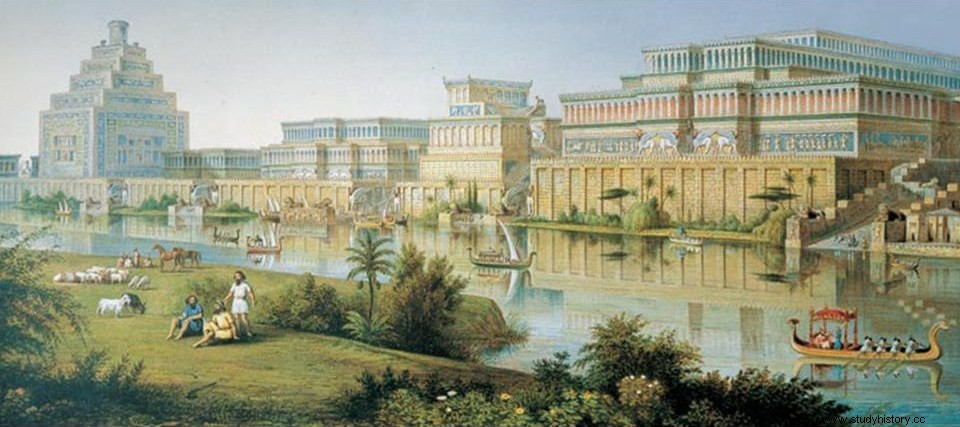Some customs never change. From the most remote times, the human being realized that some of his companions gave off an unpleasant smell of chotuno , so he had to use his ingenuity to solve the problem.
The Sumeroacadians, because of living in a land full of canals, it seems that they were fond of washing. Curiously, little physical evidence of this has been found:ceramic pipes in the Palace of Mari and a bath room in the city of Umma. It is problematic to locate more remains because the Sumerian cities appear converted into a jumble of adobes, making it very difficult to determine if a piece of wall belonged to a palace, a warehouse or a temple. However, in the literature of the two rivers we find evidence that they practiced cleaning methods. Apart from some medical books, in a poem of the hierogamy quite popular (See "The New Year in Sumer, the dream of a porn scriptwriter"), the process of bathing a priestess is described in detail.
The poor and humble people could resort to the old system of rubbing themselves with ash or mud and then rinsing their skin with water from a well. The canals in Sumer were only used to swim or travel through them, as they were so appreciated that the laws prohibited making major and minor waters in them under penalty of very harsh punishments.

If the person was more affluent, the body was smeared with olive oil, and then the skin was rubbed to remove oil and dirt. The women rubbed a powder of very diluted soda and incense ash on their oiled legs, rubbing it with a pumice stone, which constituted a hair removal system. Of course, then they had to resort to moisturizing creams, many of which had almond milk and oatmeal among their components.
The upper class, of course, resorted to more sophisticated systems. It began by smearing it with olive oil, and then a blackish powder composed of various ingredients such as incense ash and what they called “water wood was rubbed on the oiled skin. ”. What plant did it come from? Mystery! Until today it has not been possible to find out. The truth is that we currently know that mixing a fat (oil) with an alkali (vegetable ash) applying heat (rubbing, for example), produces… soap. In short, the well-to-do Sumeroacadians used a primitive soap to wash themselves.
The extremely wealthy also resorted to the whitish, slightly soapy water that remains after the first washing of freshly sheared wool. They had discovered that not only did it leave the clothes clean, but the skin was smooth and beautiful. Today we know that one of the ingredients of this water is Lanolin , which is included in cosmetic creams.

And finally, no one should be surprised that, as I said before, Sumeroacadian women shaved their legs. It was considered in good taste. Of course, they only shaved that part of the body. Every girl from the two rivers burst into gruppie screams at the sight of a burly young man with hairy legs, a trucker's chest in a rest area, a long beard (curly in the case of the Akkadians) and a shaved head (Sumerians) or a flirty bun (Akkadian). As for the Ken on duty, she howled at the moon if her Barbie she came out of fiestuki wearing a showy frown (those who did not have, painted it).
And it is that, although some customs do not change, others, on the other hand, do a lot.
Contributed by Joshua BedwyR author of In a Dark Blue World
